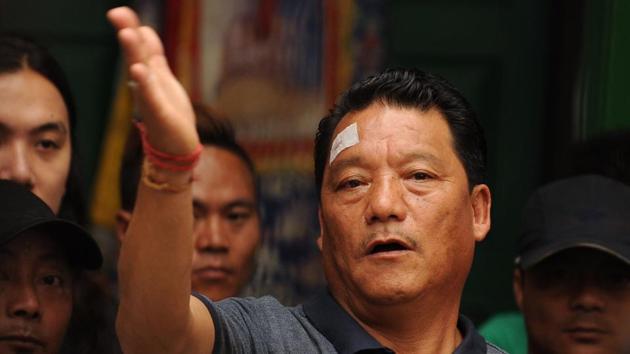Who will run the Gorkhaland Territorial Administration?
What was lost in the din of the ongoing agitation led by Bimal Gurung’s Gorkha Janmukti Morcha (GJM) is the concern of an estimated 5,000 employees in the 40 departments under the Gorkhaland Territorial Administration.
When Bimal Gurung, the chief executive officer of the Gorkhaland Territorial Administration (GTA) pulled out from the semi-autonomous power-centre in the hills of West Bengal, the battle-cry for a separate Gorkhaland state got shriller.

But what was lost in the din of the ongoing agitation led by Gurung’s Gorkha Janmukti Morcha (GJM) is the concern of an estimated 5,000 employees in the 40 departments under the GTA.
What will happen to them? Who will pay their salaries? And will they have their jobs at all?
GJM’s Darjeeling legislator Amar Singh Rai said the party “withdrawing from the GTA will not affect its functioning”.
For the time being, the GTA will be run by the principal secretary or an administrator appointed by the state government.
Many feel that scrapping of the GTA, formed in 2012 to replace the Darjeeling Gorkha Hill Council, is only a matter of time.
“Once the GTA is scrapped, it will be the state government’s responsibility too rehabilitate the employees,” said Neeraj Zimba, spokesperson of the Gorkha National Liberation Front, which once led a violent statehood movement under its mercurial leader Subash Ghising. Ghising passed away in 2015
The GNLF is one of the constituents of a 14-outfit alliance pressing for statehood.
A government officer who had previously served at the GTA told HT that all development projects under it will be stalled and there will be chaos.
“Instead of setting up development boards for different ethnic communities among the Nepali-speaking people of the hills, the state government should have transferred all the departments as per the tripartite agreement,” the officer said, referring to a pact signed in July, 2011, between the Centre, state government and GJM for creation of the GTA.
“GTA has become an ineffective body with rampant corruption and too much interference by the state government, which is unfortunate,” he added.
Others say the GTA has failed to serve its purpose.
“GTA was the biggest mistake of the GJM and we hope that they do not repeat the same mistake by accepting any other institution similar to GTA. The people of Darjeeling are ready to go for the hardship, as the present movement in not for development but a political one,” Zimba said.
“It is now up to the Centre to find a solution.”
Harka Bhadur Chhetri, chief of Jan Andolan Party (JAP), said that the GTA has failed to fulfill the aspirations of the hill people.
“It was a failure and GJM did not learn from the mistakes of the Subash Ghising-led GNLF in settling for yet another autonomous body instead of a full-fledged state,” Chhetri said.
Chhetri, who was a GJM legislator from Kalimpong and later broke away to form his own outfit, said his party’s representative at the all party meeting spoke for the one-point agenda of Gorkhaland.
“If not Gorkhaland, nothing,” he said.
For Bimal Gurung, withdrawing from the GTA was a political necessity, experts say
It is, many believe, a last-ditch effort to maintain his political hegemony over the Nepali-speaking people in the hills and vast tracts of neighbouring Dooars.
With an adamant state government unwilling to sit for a dialogue and the pro-Gorkhaland parties reluctant to accept anything less than statehood, the people of the hills are bracing for a long hauled turmoil.
Pro-Gorkhaland parties that had been marginalised by GJM have jumped on with the all-party bandwagon to reassert their presence in the hills.





